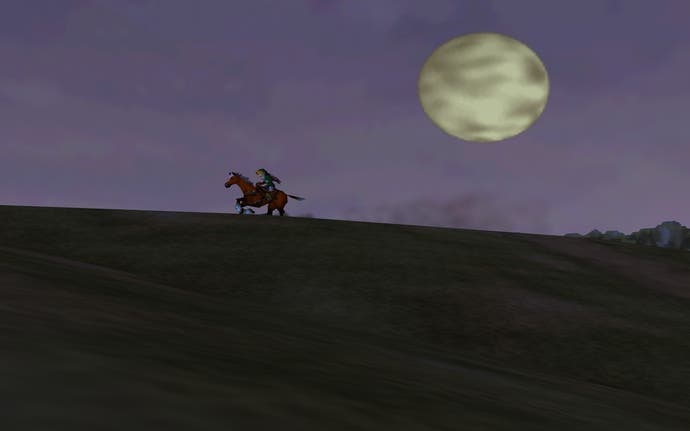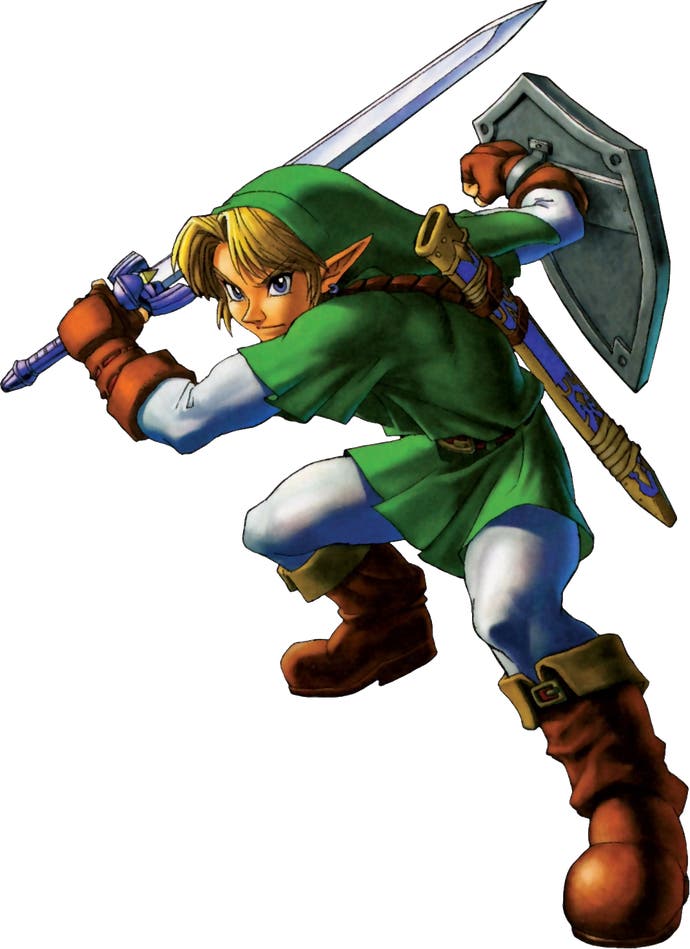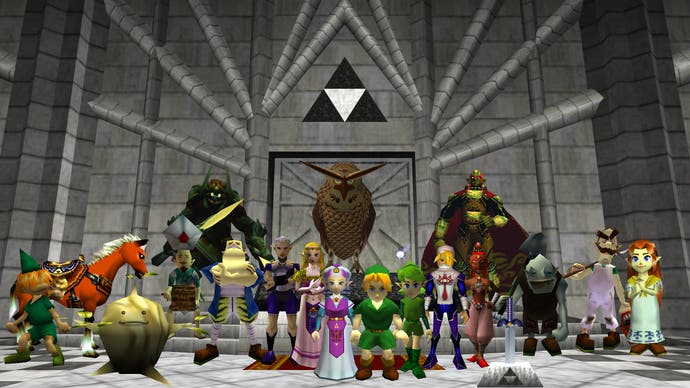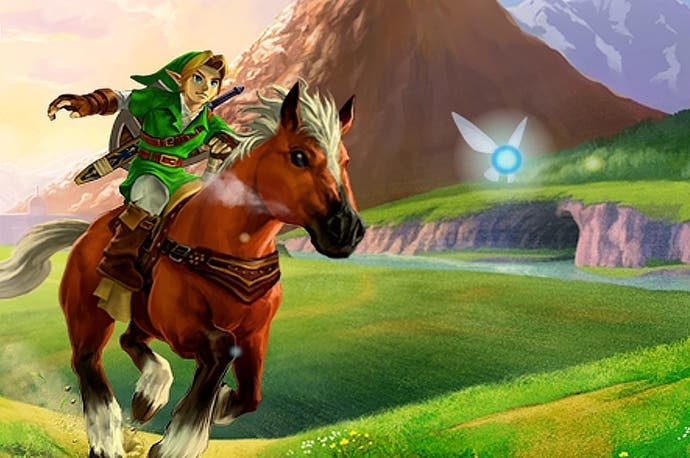The Legend of Zelda: Ocarina of Time retrospective
Timeless.
I know. You've heard it all before.
But, in the words of one infamous fairy, listen.
Success and greatness are different things, yet people often blur the two. While 99 per cent of commercial entities are here today, forgotten tomorrow, true creatives leave an indelible mark on public consciousness and an inheritance for their protégé.

Shigeru Miyamoto is recognised for some of video gaming's most enduring and pioneering properties, a legacy to which the industry will always be in debt. Yet, while Miyamoto is to Mario what Walt Disney is to Mickey Mouse, the work of the Kyoto born luminary represents more than just a character. His experimental evolution in game design - an arcane paradigm impossible to emulate definitively - is a form of authorship, and The Legend of Zelda: Ocarina of Time, a product of its principles.
A work of some majesty, it seems Miyamoto and the R&D class of '98 committed to raise the bar beyond all feasibility, or die trying. Using a Link to the Past and Link's Awakening as a blueprint, Ocarina aggrandizes the series inimitable and elegant formula with beautiful three-dimensional brushstrokes.
Distinctive amongst role-playing games and action RPGs alike, Zelda's challenge is weighted in mental engagement rather than combat. A note-perfect symphony of discovery and progression, the player is manipulated into seeing the game not as a linear path, but one of multiple variables. Miyamoto's obscuring of underlying complexities is a particular kind of sorcery, massaging vital elements into an unseen causal timeline. This dexterous finessing cues the player to determine a solution or prompt a development of their own intuition.
Although there are instances where Navi, Link's fairy, and other Hyrulean dwellers attempt to steer you in the right direction, it's always with enough ambiguity to ensure the payoff is yours alone. You may be constantly championed for finding a map, exchanging a mask, collecting a token, and of course, opening a chest - but it's the steady market of application and deduction that proves most seductive.
In a genre bogged down with picture book storytelling and Barbie and Ken character building mechanics, an emphasis on thinking appears more innovative than ever. Unlike Zelda's past, Ocarina doesn't baby step, but strides, rapidly blooming into a detailed universe where every dusty corner and buried crevice seems to hold some untapped significance. Shopping, fishing, cross-country racing, and the desecration of tombs and tunnels are but a handful of Hyrule's leisure activities. As the landscape unfurls, you leave the forest and travel across Hyrule Field to the castle, Kakariko Village and the Goron lair, and then to Zora's hidden underwater domain and the belly of the beast.
Just as you find your feet, the rug is pulled out, leaving Link with a whole lot of growing up to do. Such twists have been done before, of course, but rarely with such resonance. On the Famicom, Super Famicom and Game Boy, Zelda captured us with the power of its composition and peerless execution, but Ocarina lives and breathes, and not by accident.

Hyrule is a snow globe of pockets requiring your attendance at their far-flung reaches, a broad ecosystem encompassing woodland elfin Kokiri, rock eating mountain Gorons, and capitalistic humans bartering every trinket they can lay their hands on. It's a world with an exclusive fantasy certificate, combining Celtic, Tibetan, Medieval, Egyptian, and Greek mythology for its armoury, temples and monstrous dungeon keepers.
It's also unmistakably Japanese, typified by the exotic mystery and chronic lunacy of its inhabitants, the Great Fairy's eminence juxtaposed with her suggestive behaviour, and a ubiquitous threat of adult themes. Skull Kid, prior to his delusions of grandeur, expresses the beginnings of his mask fascination in the Lost Woods; Malon, a young farmer's daughter, rears gaming's most famous steed; and pivotally, princess Zelda recounts the history of Hyrule and its protective Triforce before Ganondorf, king of the desert brigands, threatens the equilibrium of her world.
The game's robust aesthetic sees the 3DS tipping its hat to the Nintendo 64 toolset nearly 15 years later. Not only does it remain structurally and graphically superb, but the quality of its supplementary features - from obstacle navigation, weapon implementation, and its exacting brand of lock-on combat - remain very much in a league of their own.
Strengthened by a rich, surprising realism in-spite of its cartoon definitions, its dark half, a sinister overtone of dread and pathos, paints Hyrule under a canopy of rainy graveyards, masked cadavers, and the damnation of the Shadow Temple; notable for its leaden guillotines and the corpse figurehead embellishing its River St ferry. Slipping from the jovial to the horrifying with tacit maturity, one torchlit encounter in a tapestry of skeletal remains resembles a macabre Lovecraft fantasy: the floor sprouting clawed hands that seize Link by the head while a leathery white creature saunters over to cannibalise him.

Temple ransacking is wedged between unique tasks and excursions that emphasise secondary characters and preface new destinations. The stealth mission inside Ganondorf's desert compound - a multi-tiered villa patrolled by a band of female thieves - is a notable example, not least because of its aloof gender war back-story.
Koji Kondo's perceptive musical score underpins every subtle atmospheric shift, effortlessly capturing the eerie, the unknown, the deliciously black and the touchingly heartfelt. He's as guilty as anyone for Ocarina's timelessness, cementing each swell of the heart and accompanying skipped beat with an auxiliary power that transforms it into an old curiosity shop of a game; a dark slice of the weird and wonderful, the comic, the occult, the fearsome and the eccentric.
An appropriate musical theme is the Ocarina itself, instrumental as a tool to shift space and time, call on friends, warp to remote destinations, and transport Link into a future where the kingdom has suffered a grave misfortune. While the interim periods are as nuanced and detailed as the main course - an enchanting harmony of puzzles and interconnecting particulars - there are few equals when it comes to the neurological euphoria of a dungeon. The incomprehension when a temple greets you with multiple doorways, passages, ladders, and booming, cavernous hollows, is oppressive; but deciphering the angles and chipping away at its overall form is a matter of unparalleled design wizardry. Stoking the intellect and rewarding intrepid thinking, challenges sit within challenges, an assembly of blocks and timers, a patter of arrows and a hookshot rattle.
Death-defying leaps and dizzying heights mark the occasional call for impetuous bravura, cinematic stopgaps in an engine of disentanglement.
And the Water Temple, fabled and feared, a conception of outright devilry that will always belong to its designers, is the vertex of not only the greatest collection of dungeons ever to grace a Zelda title, but one that represents the ambition, success, and peak of Japan's mastery in the medium: an exercise in brevity, a triumph in craft.
Compared to the abstruse enterprising and sadly misunderstood genius of its successor, Majora's Mask, Ocarina is relatively uncomplicated, and it's this everyman carriage that will always make it the more enticing lure. It's not the cleverer of the two, but the purer. It doesn't want you to pop in and save the day, it wants you to stay forever. And it succeeds, through the effort and ingeniousness of its tailors, to eternally echo in the memory.

Beyond the class of its arrangement, there's an accord that surpasses the game's mechanisms: an unintended poetry - the hallmark of all great things. Its fine tapering exercises an iron command over the player's imagination and emotions, parading thunderous confrontations, wistful locations, unforgettable relationships, and pure charm in every facet of its periphery. Its climax is also fittingly heavyweight, beginning with Ganondorf interrupting the game's soundtrack as he steps up from his cathedral organ, and ending in a violent, yet necessary retribution that doesn't sit so well with Nintendo's family image.
It's this unbending desire to serve the game first that makes Ocarina so powerful. It's a creative exposition, and a labour of love unconcerned with the shareholder's pocketbook. Perhaps, and in-spite of his lack of video game acumen, this is what Yamauchi - and Miyamoto, respectively - recognised best. The end sequence may be a gala in acknowledgement of the player, but the deeper sentiment is of a team celebrating their own victory, with justified conclusiveness, as if they knew it was something they would never better.
Ocarina of Time is an experience that uses the videogame as a vessel, but isn't mired by the medium's limitations - a feat of dramatic accomplishment that deserves recognition outside its immediate sphere of influence, and a more valuable gift than any petty price tag would have you believe.
Brilliance can't be classified in clinical standards because art is an experimental science, but time - whether weeks, months, years or decades - judges the enduring qualities of a work and its authors. 15 years on, Ocarina is as fresh, vibrant, and luminous as it ever was, and the most powerful example of video game expression. Pass it on to your kids.

